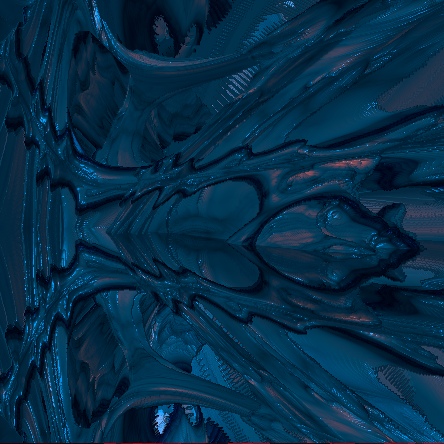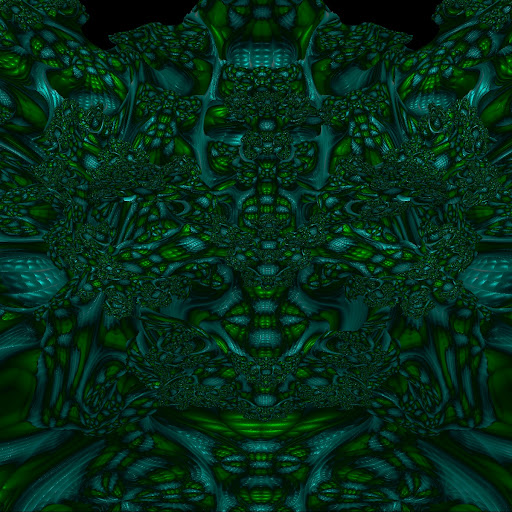A few images, after a few comments.
Basically, I think I might have been thinking about triplex (and complex) numbers a bit backwards: or maybe I didn't really think about them in a direction at all.
I've been multiplying cosines and sines by magnitudes, thinking that this took them into the realm of complex (and triplex) numbers. But really, when I wrote the complex triplex formulas (posted above), I started thinking that maybe this way of looking at it is backwards.
When you take victor:
victor = x +
i * sqrt( y^2 + z^2)
to the nth power, then take bravo:
bravo = y +
i * z
to the nth power, and grab the components out of them to create new x, y and z values, you don't want to apply the magnitude of the y and z components twice, which you would be doing if you multiplied the components of bravo^n by the imaginary part of victor^n (which already has been effected by the magnitude^n (n times)) without dividing out the magnitude n times.
The magnitude has to be divided out once for each time it would be double applied (for the y and z components), which I do in the above formulas. So the whole thing of ending up with
a sin and a cosine times the magnitude of all 3 variables is actually the elimination of the 2nd set of magnitudes of y and z when we extend complex numbers to higher powers.
Anyways, here is a neat glacial looking z^2 thing I did by taking the 4d formula and setting:
sx=nx+sx;
sy=ny+pixelr;
sz=nz+abs(pixeli);
sk=nk+pixelj;
for the 4 variables. It ends up being a wickedly complex fractal for odd n z^n (5, 9, 13... are the best). In fact z^9 is unbelievably awesome to zoom into, although the even n z^n are slightly boring...

and here is a 3d z^3 I banged out with the complex triplex formula (1200x1200 z res = 3* took 11 minutes 1 second with an animation calculating in the background!), it's simply a phenomenal formula
(click here to view bigger) :

Here is the quick video... don't know why, but 480p isn't working (probably a bit later it will) on youtube (I can set it to 480p, but it still looks bad).
<a href="http://www.youtube.com/v/4htck30jHpE&rel=1&fs=1&hd=1" target="_blank">http://www.youtube.com/v/4htck30jHpE&rel=1&fs=1&hd=1</a> This new way of looking at complex numbers extended to higher dimensions can be applied to other formulas as well, like my mag vs. xyz fractals, type D2, or any rotation based fractal. I'll do a release of the various fractals later, starting with mag vs. xyz style, modified to have:
victor= complex (sx + i * sqrt (sqr (sy) + sqr (sz) )));
bravo= complex (sy + i * (sqrt (sqr (sx) + sqr (sz) )));
cramden= complex (sz + i * (sqrt (sqr (sx) + sqr (sy) )))................
Anyways, the idea doesn't really work that well, at least in the ways that I've applied it. I do think that the Christmas tree fractal formula is the "real deal" for a few reasons.
The 2d Mandelbrot sets asymmetry over the +/- x axis for even n (z^2,4,6...) is extended to the 3d set, but it is magnified by the asymmetry of the y-z portion of the formula which results in the very asymmetric even n 3d fractals.


















